A successful large-scale meeting depends on an environment that fosters collaboration, clear communication, and a sense of unity. The centerpiece of this environment is often the conference table. Choosing the right one is a critical decision that affects the room’s aesthetic, its functionality, and the productivity of your team. A well-chosen table supports seamless interaction, accommodates necessary technology, and reflects the professionalism of your organization.
Selecting the appropriate furniture involves considering size, shape, material, flexibility for growth, and more. Each of these elements plays a vital role in how participants engage with one another and the information being presented. An oversized table can make a room feel cramped, while one that is too small can leave attendees feeling disconnected. Similarly, the shape of the table can either encourage open dialogue or create unintentional hierarchies. We’re taking a look at choosing the right conference table for large-scale meetings and why this decision matters.
Determine Your Seating Capacity Needs
Before you can choose a table, you must first understand how many people you need to accommodate. Overcrowding a table can lead to discomfort and distraction, while providing too much space can make the setting feel impersonal. Start by reviewing the capacity of your largest meeting room and consider the typical size of your board meetings, client presentations, or team-wide planning sessions.
It’s always wise to plan for growth, so select a table that can comfortably seat your current maximum number of attendees plus a few extra for guests or future team expansion. A good rule of thumb is to allow for 24 to 30 inches of space per person to make sure everyone has adequate room.
Assess the Meeting Room’s Dimensions
The size and shape of your conference room will significantly influence your table choice. A large, rectangular table might overwhelm a square room, while a round table could be lost in a long, narrow space. Measure the room’s length and width, and be sure to account for any architectural features like columns or alcoves.
You must leave sufficient clearance around the table—at least 48 to 60 inches—to allow for comfortable movement, including pulling out chairs and walking behind seated participants. This clearance also ensures compliance with accessibility standards, making the space usable for everyone.

Match the Table Shape to Meeting Goals
The shape of a table can affect the entire dynamic of a meeting. For large-scale gatherings, certain shapes are more conducive to collaboration than others.
- Rectangular Tables: This classic shape is ideal for formal meetings where a clear head of the table is necessary. It works well in long rooms and establishes a sense of order and hierarchy.
- Boat-Shaped Tables: A variation of the rectangle, the boat shape curves slightly in the middle. This design improves sightlines, allowing participants seated along the sides to see each other more easily, which can foster better communication.
- V-Shaped Tables: V-shaped or U-shaped tables are excellent for presentations and video conferences. They direct focus toward one end of the room, ensuring everyone has a clear view of the speaker or screen.
- Modular Tables: For ultimate flexibility, consider a modular setup like the Synergy tables from Bush Business Furniture. You can reconfigure these tables into various shapes to suit different meeting types, from large-group discussions to smaller breakout sessions, excellent for small businesses.
Consider the Table’s Material and Style
The material of your conference table contributes to its durability, style, and overall presence. Select a material that aligns with your company’s brand and the intended atmosphere of the room. Wood veneers offer a traditional, executive feel and convey a sense of prestige. Laminates are a more budget-friendly and highly durable option, available in a wide array of colors and finishes, making them versatile for modern office designs.
Other materials like glass can create a sense of openness and contemporary elegance, while metal accents can add an industrial or sophisticated touch. The goal is to choose a surface that is visually appealing and resilient enough to withstand daily use.
Evaluate Table Base and Leg Design
The base of the table affects legroom and seating flexibility. For large tables, traditional leg styles at each corner can obstruct seating and limit how many people can comfortably fit. Instead, consider pedestal bases, trestle bases, or panel bases.
Moreover, these designs provide excellent stability while maximizing legroom and allowing for more flexible chair placement. A sturdy, well-designed base ensures the table remains stable and free from wobbling, which is crucial for maintaining a professional and distraction-free meeting environment.
Ensure Chairs Complement the Table
The chairs you pair with your table are just as important as the table itself. They must fit comfortably underneath the table and provide adequate support for long meetings. When selecting chairs, consider their width to make sure you can fit the desired number of seats around the table without crowding.
Ergonomic features, such as adjustable height and lumbar support, are vital for attendee comfort and focus. The style of the chairs should also complement the table and the overall room decor, creating a cohesive and polished look.
Consider Future Flexibility and Growth
Your business needs will evolve, and your office furniture should adapt to them. When selecting from various conference tables, think about your company’s future. A modular table system offers the greatest flexibility, allowing you to expand or reconfigure your meeting space as your team grows or your needs change.
Choosing a timeless design and a durable material will ensure your investment serves your organization well for years to come. Thinking ahead prevents the need for frequent and costly replacements, positioning your workspace for sustained success.

Build for Future Collaboration
The right conference table is a foundational element of a productive large-scale meeting space. By carefully considering seating capacity, room size, shape, materials, and future needs, you will choose a table that fosters collaboration and supports your organization’s objectives.
Our mission at Bush Business Furniture is to make it simple for you to create effective workspaces that enhance productivity and foster growth. With an eye toward the future, the right furniture solutions will grow with your business as your needs change. Check out our new Synergy Collection and let us know if you have questions!
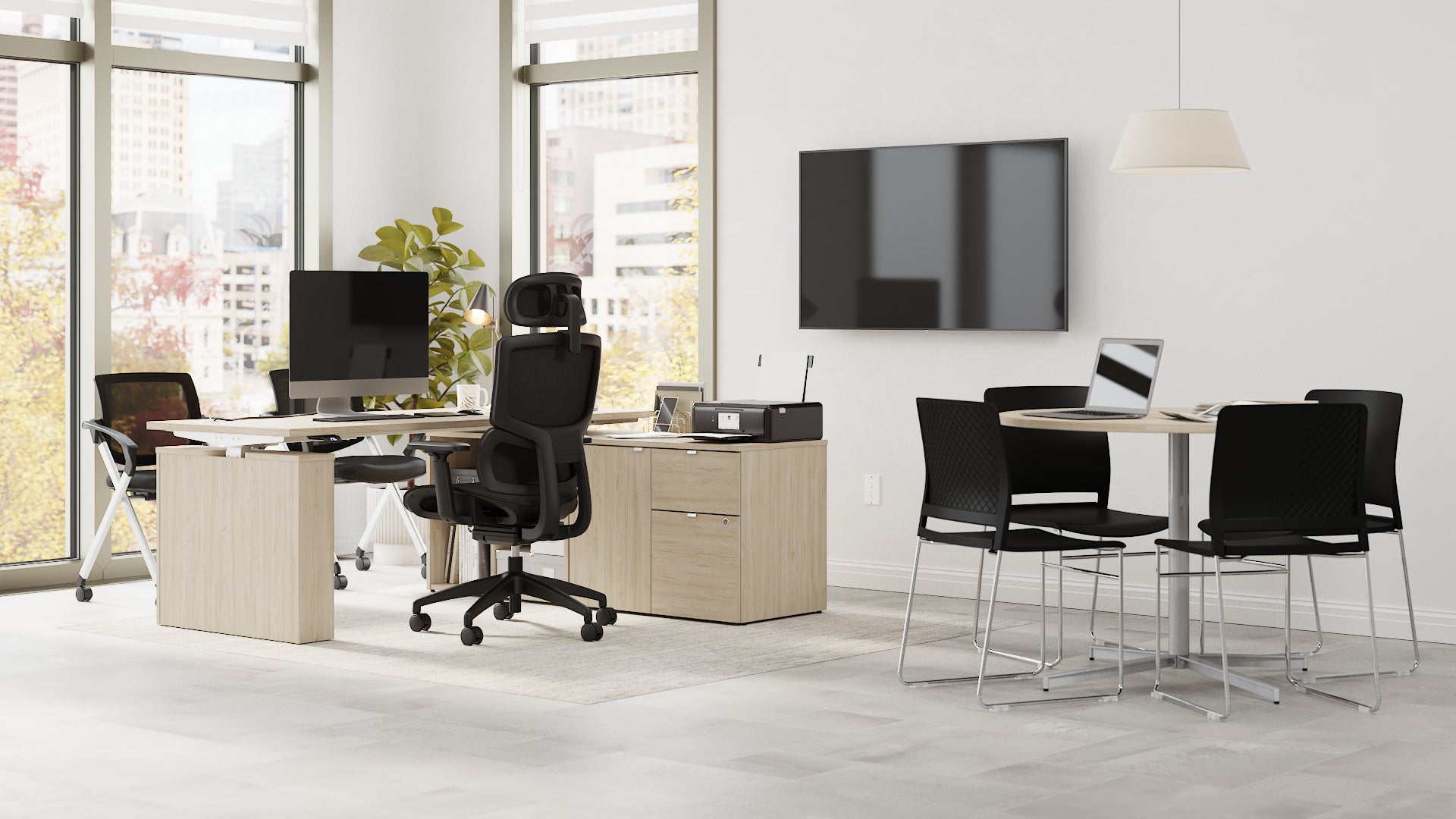
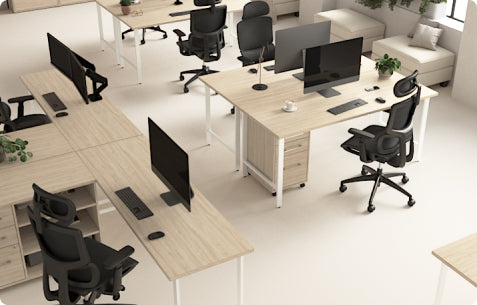
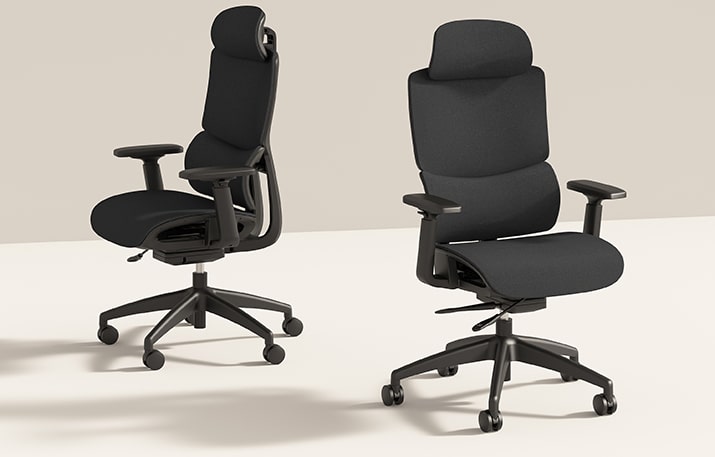
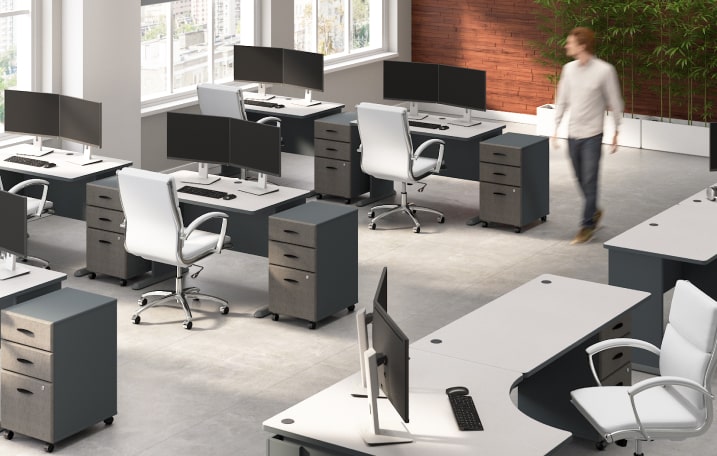
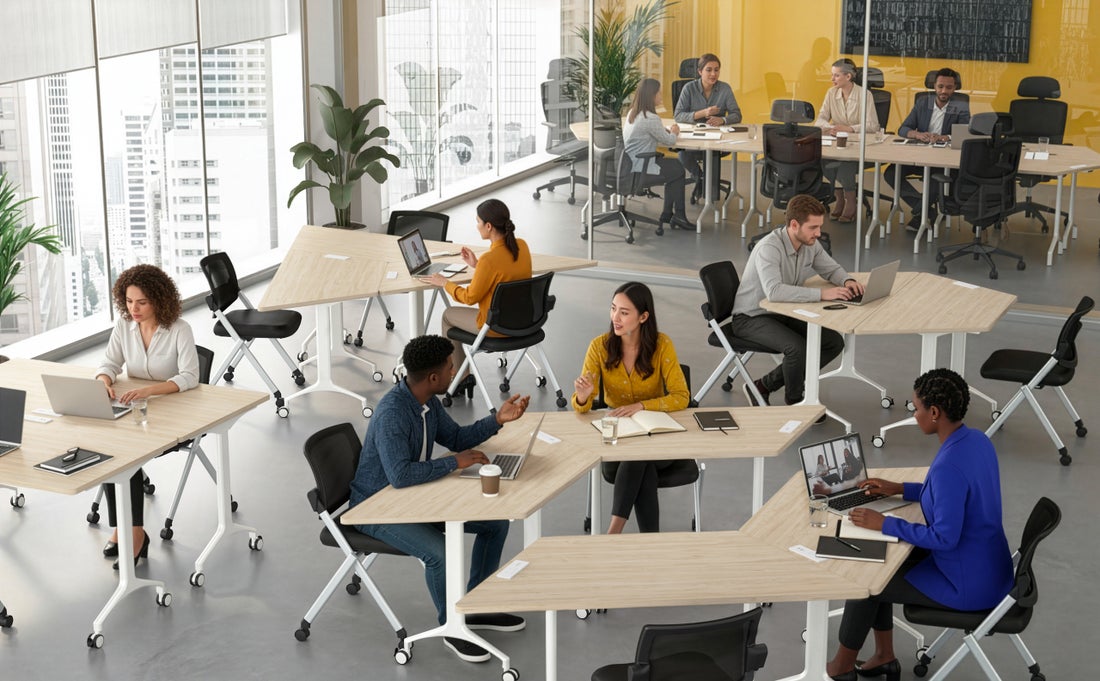



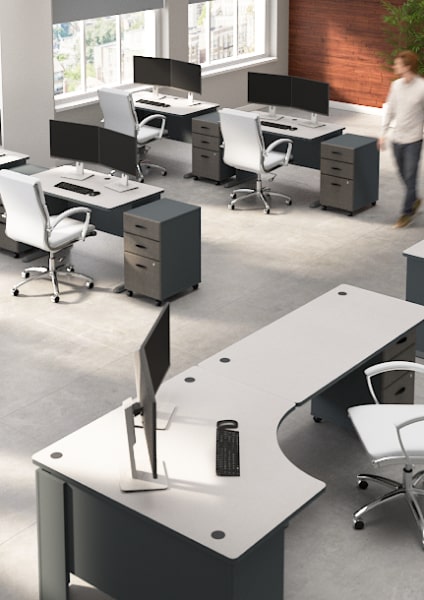
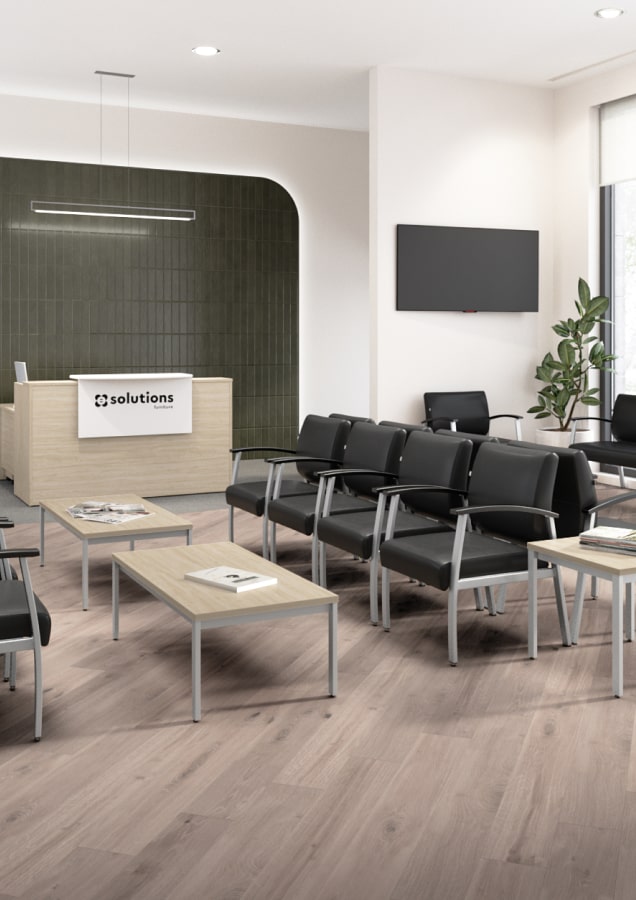



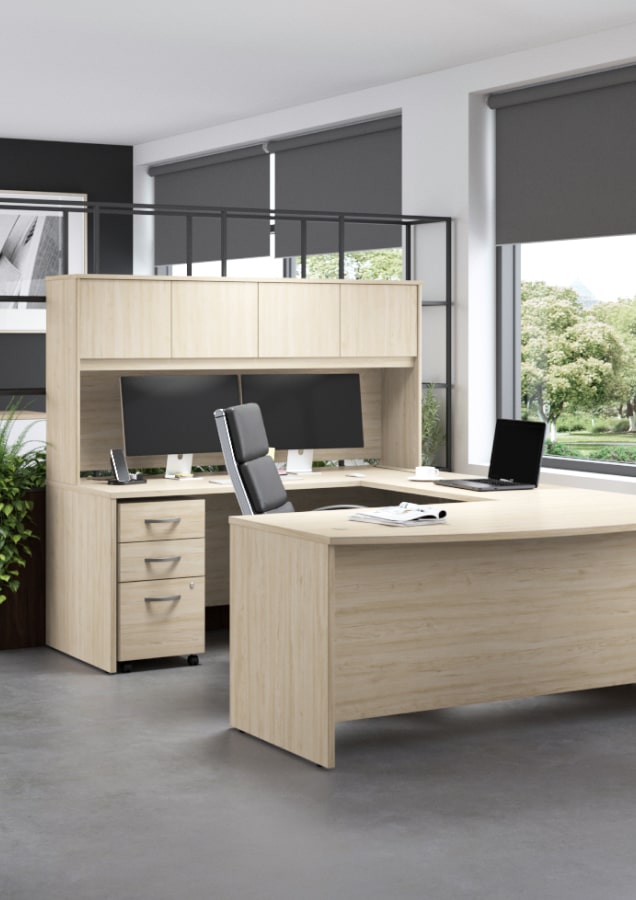
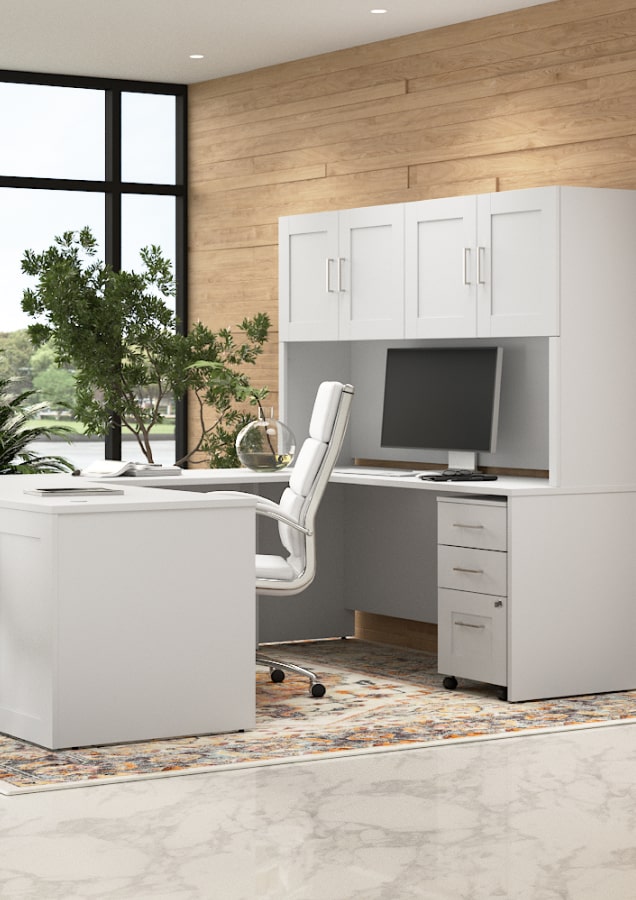
Leave a comment
This site is protected by hCaptcha and the hCaptcha Privacy Policy and Terms of Service apply.